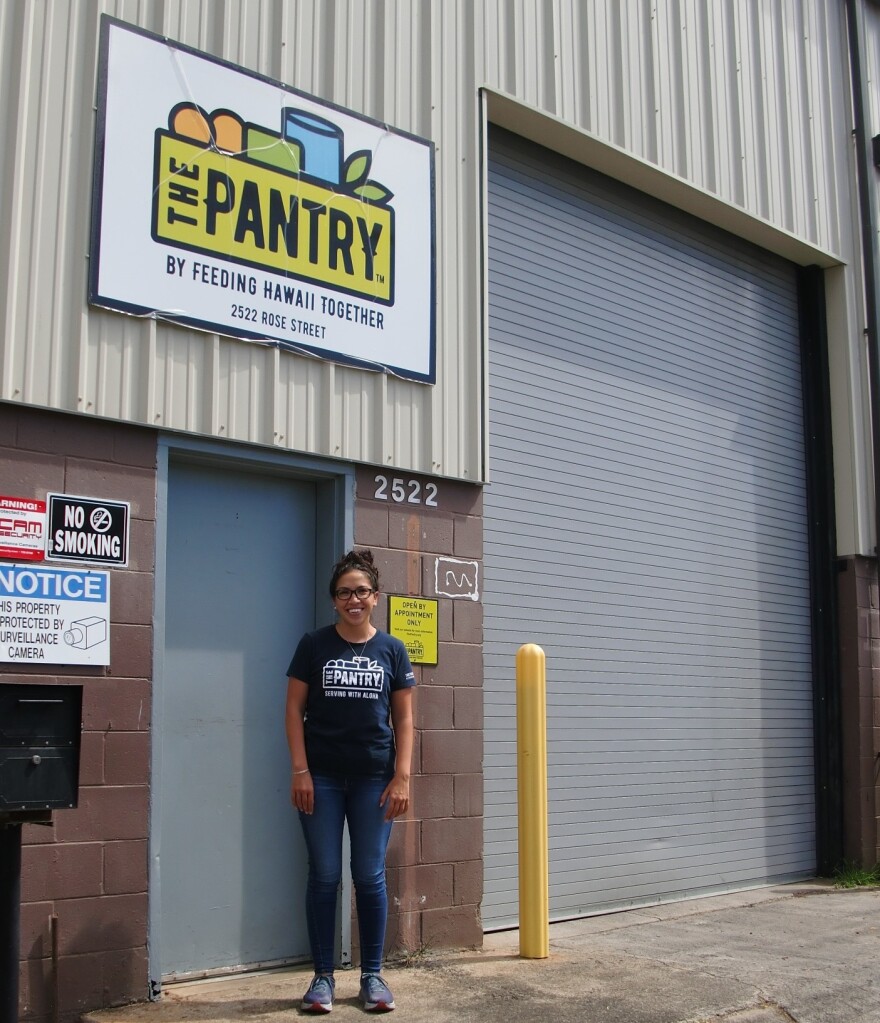Nonprofits that distribute food to the needy say that as the pandemic slows, some groups show a consistent need. But the government and private funding that has helped fill that need seems to be going away.
The nonprofit group Feeding Hawaiʻi Together was founded by Charlie and Diana Lorenz nearly 30 years ago in Kakaʻako. But in 2017 they lost their lease.
The organization spent more than 3 years scrounging for grant funding for warehouse space close to town, in order to serve the need in metro Honolulu.

In 2020, it was able to reopen in a renovated 13,000-square-foot warehouse in Kalihi — which it now owns — and rebranded as The Pantry by Feeding Hawaiʻi Together. But it wasn’t easy.
“Looking for a warehouse space was incredibly difficult, in that we’re a very small organization with a very limited amount of funds, and so looking for a warehouse space that would enable us to continue to have that sort of self-service shopping for food was a difficult endeavor. And then once we found this location, we had to go find a grant that would support it," Executive Director Jennine Sullivan said.
Down the street at the 126-year-old Pālama Settlement, Executive Director Sam Aiona said that the biggest challenge to obtaining funding is competition from other nonprofits.
Sullivan said they also have to cope with inflation, the lack of further pandemic funding, and a lack of public awareness.
Do you see there's going to be a lack of public funding?
“Absolutely. Unfortunately, I think one of the big challenges that we face is the lack of public awareness and/or perception of the food insecurity problem. Aloha United Way came out with their midterm report that said 58% of Hawaiʻi families are considered ALICE — which means they don’t have enough money to make ends meet, which is up 10% from the prior year when they said that 48% of Hawaiʻi’s families were food insecure," Sullivan said. "And so the need is rising.”

During the height of the pandemic, The Pantry served 650 families in just four hours. Now, the numbers have settled down to 11,000 individuals, or 4,000 families a month.
But Sullivan said three consistent groups continue to show up: kūpuna, people with disabilities, and those considered ALICE, meaning asset-limited, income-constrained, and employed.
“The people that we’re supporting, they’re not emergency food support. These are long-term, structural families that are unable to afford Hawaiʻi’s high cost of living," she told HPR.
In our final report on Friday, we'll see what the need is like at nearby Pālama Settlement, and what the future holds for those who are food-insecure.
Take a look back at part one to learn how The Pantry provides a lifeline for people like 70-year-old Remedios Butac of Salt Lake. Part three takes us to Palama Settlement in Kalihi.






